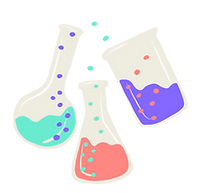Simple and Safe Experiments Kids Will Love
- nerds7

- Apr 22
- 4 min read
Engaging children in science can be an exciting adventure. Through simple and fun experiments, kids can explore, discover, and learn about the world around them. In this blog post, we will share some delightful experiments that are not only safe but also captivating for little minds.
Kids Experiments You Can Do at Home
Today's kids are naturally curious. They often ask questions that lead to exploration. Whether it's a desire to know how plants grow or the magic behind a rainbow, experiments help satisfy that curiosity. Here are a few safe and straightforward experiments you can conduct at home with your children.
1. The Magic Milk Experiment
This experiment is both visually stunning and easy to perform. All you need are some basic ingredients: milk, food coloring, and dish soap.
What You'll Need:
A shallow dish
Whole milk
Food coloring
Dish soap
Cotton swabs
Steps:
Pour milk into the shallow dish until it's about half full.
Add several drops of different food coloring around the surface of the milk.
Dip a cotton swab in dish soap and then touch it to the milk's surface.
You will be amazed as the colors swirl and dance! This experiment shows the interaction of different substances, as the soap reduces the surface tension of the milk, allowing the colors to move freely.

2. The Baking Soda and Vinegar Volcano
Creating a volcano is a classic and explosive way to excite kids about science. This experiment demonstrates an acid-base reaction, making it both educational and entertaining.
What You'll Need:
Baking soda
Vinegar
A small container (like a plastic bottle)
Food coloring (optional)
A tray to catch overflow
Steps:
Place the small container on the tray.
Fill the container halfway with baking soda.
Add a few drops of food coloring for effect.
Slowly pour vinegar into the container and watch the eruption!
The reaction produces carbon dioxide, resulting in a bubbly volcano that will delight your young scientists.

What is science for a 5 year old?
For a 5 year old, science can be understood as discovering how things work around them. It’s about asking why the sky is blue, how plants grow, or what happens when you mix certain things. Through experiments, kids learn the basics of scientific thinking: making observations, asking questions, and finding answers. By engaging in hands-on activities, they explore concepts in a fun and memorable way.
As they conduct science experiments, children grasp foundational ideas like cause and effect, critical thinking, and problem-solving. This approach sets the groundwork for exploring more complex scientific principles as they grow.
Simple and Safe Experiments for Young Scientists
Here are additional science experiments that kids will love:
3. Homemade Lava Lamp
Creating a lava lamp is another fun experiment that demonstrates density and chemical reactions.
What You'll Need:
A clear plastic bottle
Water
Oil (any type)
Food coloring
Alka-Seltzer tablet
Steps:
Fill the bottle one-third full with water.
Add a few drops of food coloring.
Carefully pour in the oil until the bottle is nearly full (you will see it separate from the water).
Break an Alka-Seltzer tablet into pieces and drop one in.
Watch as colorful bubbles rise and fall! This experiment shows how oil and water don’t mix due to their different densities.

4. Grow Your Own Crystals
Growing crystals is a fascinating way for kids to see science in action. This experiment requires patience but rewards with beautiful results.
What You'll Need:
Sugar or salt
Water
A clear jar
A string or stick
Steps:
Heat water until it's nearly boiling and dissolve as much sugar or salt in it as possible.
Pour the solution into a clear jar.
Tie a string to a pencil and place it across the top of the jar, dipping the string into the solution.
Leave the jar in a cool place for several days.
As the water evaporates, crystals will form on the string. This process illustrates how crystals grow and can lead to discussions on crystallization in nature.
5. Exploring Static Electricity
Static electricity can be a thrilling lesson for kids. It's a practical way to learn about the forces of nature.
What You'll Need:
A balloon
A wall or a piece of fleece fabric
Steps:
Inflate a balloon and tie it off.
Rub the balloon on your hair or a piece of fleece for about 30 seconds.
Hold the balloon near a wall or lightly touch small pieces of paper.
Children will see the power of static electricity as the balloon sticks to the wall or picks up the paper pieces. This simple experiment makes the concept of electrostatics accessible and engaging.
Engaging Your Kids in Science
To foster a love of science early on, involve your children in daily activities. Discuss the world around them, encourage their questions, and invite them to think creatively. By using simple and safe experiments, you can help them understand and appreciate scientific concepts in a playful way.
Much of the learning comes from their experience and observation. Make sure to let them lead their curiosity. You might be surprised at the depth of their understanding and creativity!
Final Thoughts on Science for Kids
Engaging with kids through hands-on science experiments is one of the best ways to spark their curiosity and encourage learning. These experiments will not only entertain them but can help them grasp important concepts. The beauty of science lies in its ability to inspire wonder; through these safe and simple activities, your kids will cultivate a love for learning and exploration.
Encourage your little scientists to ask questions, hypothesize, and discover. Each experiment is a stepping stone toward understanding the world more deeply, providing them with a wonderful foundation for a bright future.
For more ideas on science experiments for kids, check out this link. Happy experimenting!

.png)





Comments